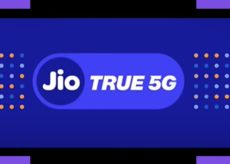Apple optical data transfer license might allow super-fast comms in between devices

An Apple optical data transfer license granted yesterday can help with super-fast communications in between devices. The license says that the technology can offer transfer rates of “terabits per second” …
Background
Optical information transfer is naturally nothing new. It can be made use of at both the network degree, utilizing fiber optic cable, as well as in the house, via fiber optics connections in hi-fi systems called TOSLINK. The benefit of optical connections over copper cables in this context is that the last do not deal with RF interference or ground loops.
Cable-free optical comms is likewise well developed. Indeed, my first fully mobile e-mail system back in 1999 made use of infra-red communication in between a Psion 5mx and a Nokia 7110.
Nonetheless, cable-free optical information transfer is very sensitive to positioning, as well as this is the problem Apple’s license seeks to fix.
Apple optical information transfer license
The company describes the issue.
A digital device can include a free-space optical communication system to wirelessly transmit, receive, or exchange data with another digital gadget. In some cases, the optical communication system may be configured to be directional (e.g., line-of-sight) in order to enhance data transfer rates, to raise data move privacy, or for any other appropriate purpose.
However, a conventional directional free-space optical interaction system is exceptionally based on precise placement of communicating tools. As such, conventional free-space optical interaction systems can not be integrated right into portable digital tools that might be moved or rearranged every now and then.
Simply put, anything with less than ideal alignment can considerably decrease transfer speeds.
What Apple has actually developed is a moveable lens at each end, to make sure that each device can alter the positioning of the optical signal, utilizing feedback from the other to attain the greatest possible transfer rates.
A technique of running a free-space optical interaction system with a source gadget and an endpoint gadget, the method including the operations of: changing a setting of a movable lens positioned over a laser diode in the resource gadget according to a pattern; monitoring power outcome from a photosensitive location of a photodiode in the endpoint tool for an optimum as well as, in response, sending a signal to the source tool to stop altering a placement of the source device lens; transforming a setting of a second movable lens placed over the photodiode in the endpoint gadget; as well as monitoring power outcome from a photosensitive area of the photodiode for another optimum and, in reaction, stopping motion of the 2nd movable lens.
Or, converted from patent-speak, one tool would certainly move its lens around until the 2nd device claims, “Quit, this position provides the greatest speeds.” Then the 2nd device would certainly do the very same point, to make sure that both lenses are flawlessly lined up.
Apple likewise claims this approach can not only be faster than radio communications, however also extra protected, due to the distance as well as careful placement called for.
A directional free-space optical communication system can facilitate boosted data transfer rates (e.g., tens of gigabits per 2nd to terabits per second), increased information move privacy, and also raised data transfer security about conventional device-to-device information communication methods, such as Wi-Fi, Near-Field Communications, or Bluetooth.
We certainly include our typical patent please note, that Apple patents a fantastic numerous things that never ever make it right into items.



